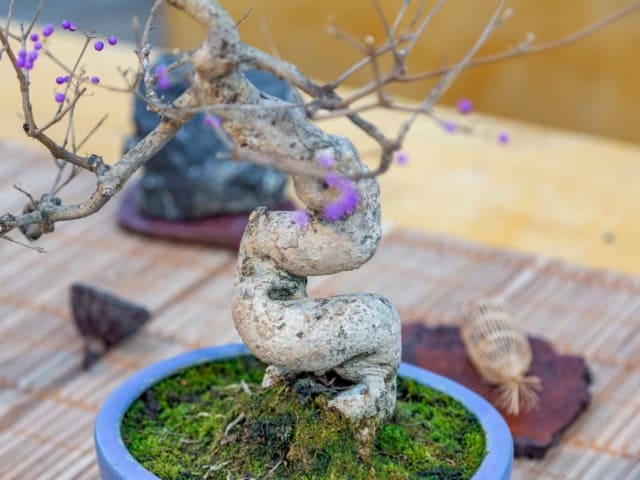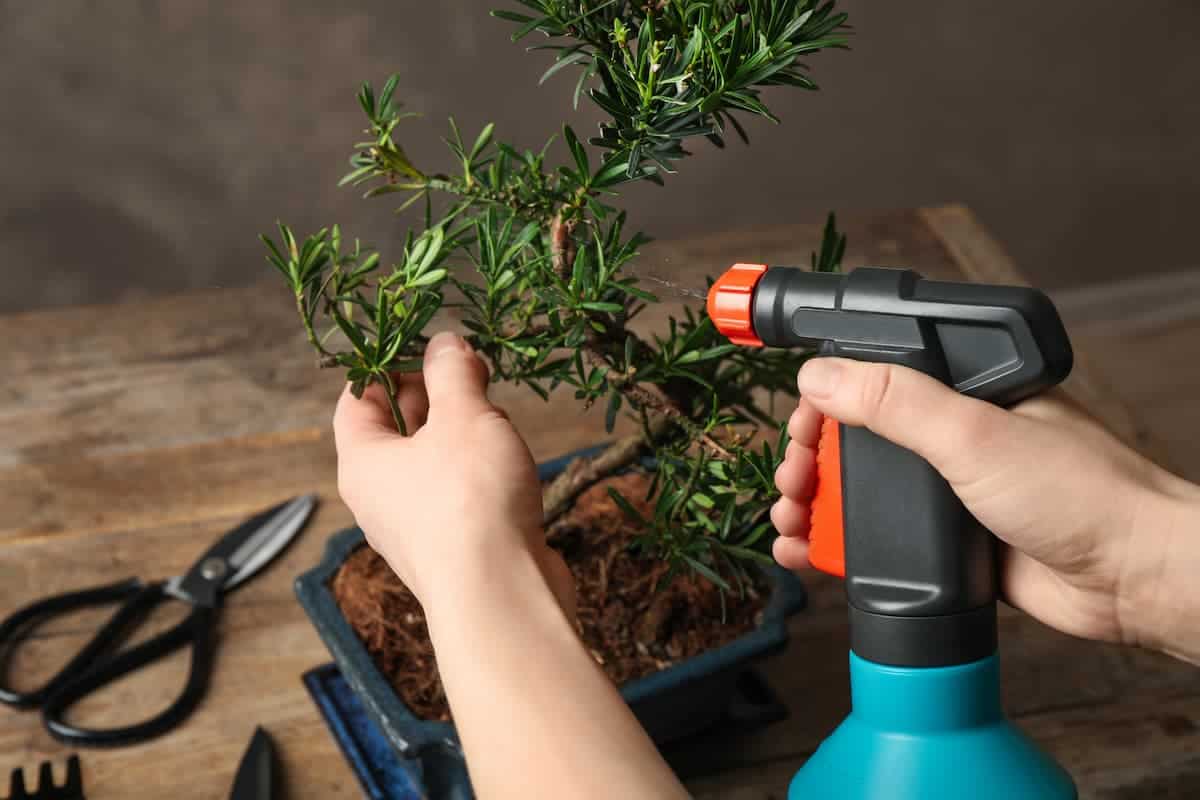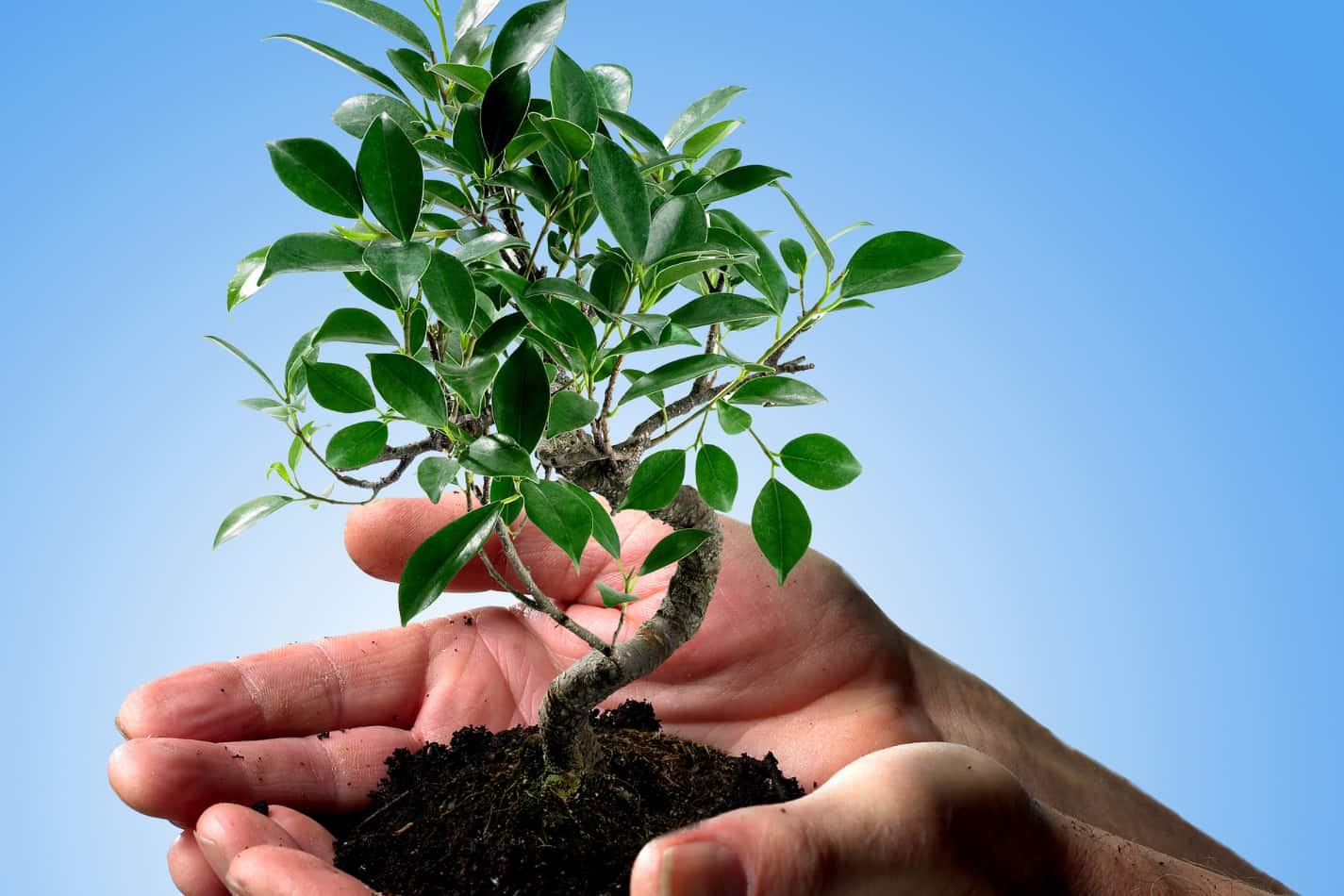All trees would like to grow outside, where it is more humid, rather than inside our homes and workplaces, where it is less humid. So, what can we do to keep our indoor Bonsai trees moist? Of course, it will be a great idea to mist them.
However, misting an indoor bonsai tree allows the desired effect of increased humidity only for around 15- 30 seconds. Using a humidity tray under your Bonsai is a superior alternative for increasing humidity. Read on to learn more.
What Makes People Mist Bonsai Trees?
Bonsai trees, in general, require similar circumstances to those found in nature. If a tree is grown in a colder area, it will flourish as a bonsai tree outside all year. Bonsai owners mimic the high humidity by misting the foliage with a fine mist every day.
Misting is primarily used on indoor tropical or subtropical bonsai trees, as hardy Bonsai does not require high humidity to grow. Increased humidity can be quite beneficial to some bonsai species, as they will begin to produce the most magnificent aerial roots when the air moisture is high enough.
Problems With Misting a Bonsai Tree.
Few people consider the negative consequences of misting a bonsai tree, but they are important to consider. When an area is moist or damp over an extended period, such as misting, it becomes an ideal breeding ground for insects, aphids, scale pests, and disease.
Although no assurance misting your Bonsai would result in this, there’s a chance that it will provide a more fertile setting for pests.
Many beginners would over-water bonsai trees as a result of poor maintenance habits. When you combine your bonsai tree’s now-rotting root system with damp topsoil, foliage, and trunk, you’ll almost certainly have fungus.
When should you spray a bonsai tree?
Spraying the leaves once a week should be enough if you only want to clean them. We will be required to spray the leaves every day to animate a tired bonsai.
Sunset is the greatest time to spray it. Do not spray the Bonsai in the full sun at noon to avoid negative effects.
How to apply the spray?
We must use a spray or a garden hose with a rose to send the light water rain on the plants. Spray from the top-down and bottom-up to ensure that the water hits all of the tree’s leaves.
Is It Beneficial To Mist A Bonsai Tree?
It’s no secret that Bonsai trees are quite similar to regular trees, except for their restricted growth and constant pruning. In theory, all trees prefer to grow outside rather than indoors, as some bonsai do.
The humidity levels found outdoors, for the most part, are not found indoors, which is one of the major reasons why trees grow there.
Also, many newer bonsai tree owners shower their trees every few days using a fine spray bottle because of the lower humidity indoors. It’s a complete waste of time, to be honest.
Apart from possibly clearing some of the dust that has settled on the tree, it will only provide the desired rise in humidity for around 15-30 seconds before having little to no effect.
How often should I mist my bonsai tree?
The only benefit you get from misting is that it raises the ambient humidity level for a short time. Misting the tree is only effective for a brief period, about 15-30 seconds. As the water in the humidity tray evaporates, it adds a little extra humidity to the air surrounding your Bonsai.
How often do you water your bonsai tree?
Watering your Bonsai is something that you should never neglect. When the soil appears dry, water it; never let the soil become fully dry.
If your Bonsai is in direct sunlight, you may need to water it once a day. This timetable may vary depending on the size of your pot, the type of soil you use, and the type of bonsai tree you have.
Apart from that, do bonsai trees demand a level of sunlight?
Every day, Bonsai require about 5 hours of direct or indirect sunshine. Certain bonsai species thrive in the winter when they receive most of their light from indirect sources.
Because bonsai trees can burn when moved from a shady to a sunny area, gradually increasing their light exposure is important.
Is it difficult to maintain a bonsai tree?
Taking care of a Bonsai tree is not nearly as difficult as many believe. Because Bonsai trees are grown in small pots, there are a few simple rules to follow while watering, feeding, and repotting your trees.
How to repot a bonsai tree?
Repotting is an important part of keeping your bonsai tree healthy. Repotting aims to eliminate any unwanted roots that could cause the tree to become hungry or not get adequate nutrients for its size.
Repotting also assures that your tree will survive in a small container. Depending on how quickly your bonsai tree grows, you should report it every two to five years.
The various ways by which you can report your bonsai tree are as follows:
- Remove the tree from its pot with care.
- Trim away the outer layer of roots using sharp scissors.
- Examine the root mass for spots of rot and cut away as necessary. These regions may suggest a lack of proper drainage for the Bonsai.
- Remove any brown or green patches from the pot itself.
- Cover soil with mesh squares to keep it from falling out of the drainage holes.
- Place the tree on top of the soil at the bottom of the pot.
Soil should be used to fill in any residual holes or gaps where the root used to be.
Finally, Misting a bonsai tree is largely fruitless, as it may provide a breeding ground for pests such as aphids and mites. A fine spray once or twice a week should be enough to remove any small bugs or dust that has gathered on the leaves since the last mist.





